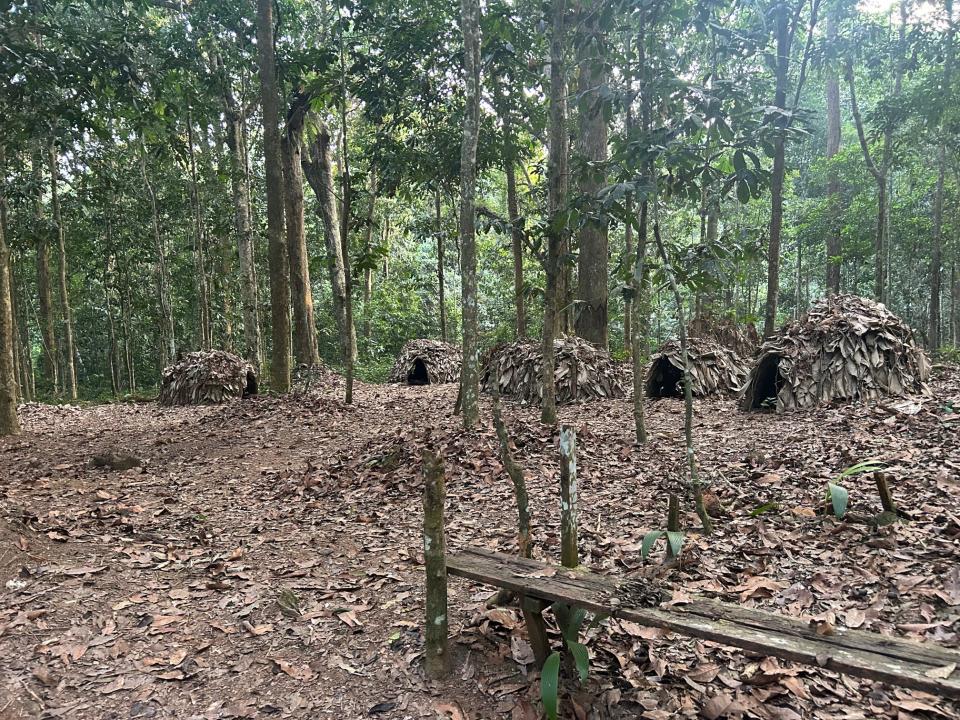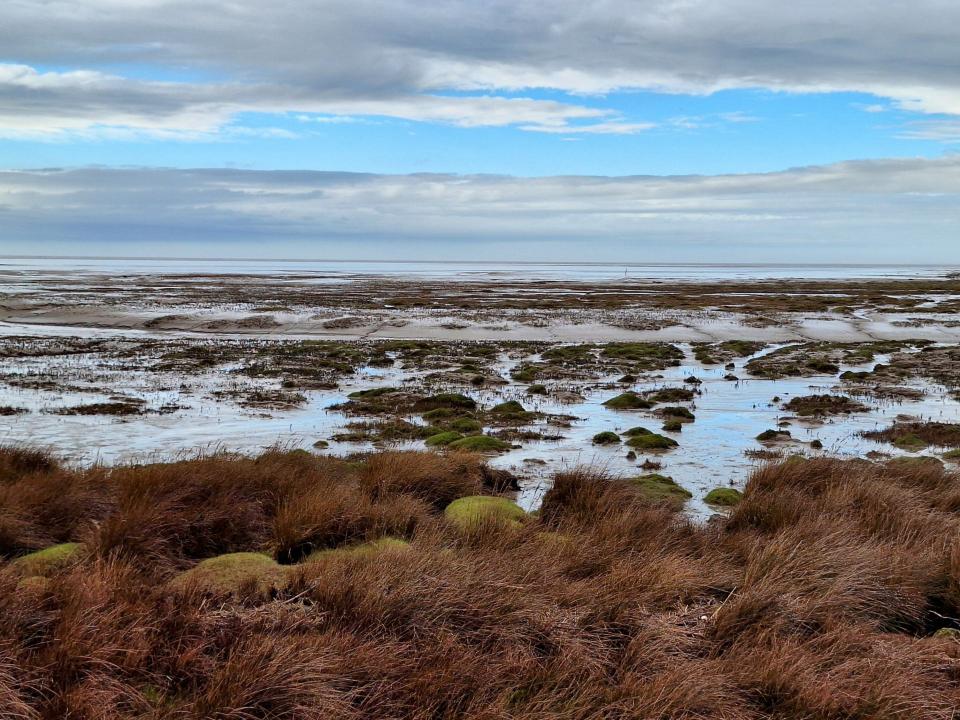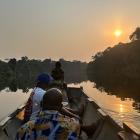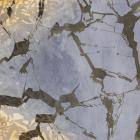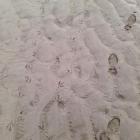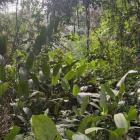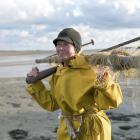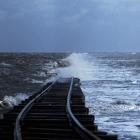Structures
Wetlands present overlapping diurnal, seasonal, and in some cases tidal cycles blurring past, present, and future, and challenging linear perceptions of time. The attempt to structure time into neat, measurable units via clocks and calendars—hours, days, moments—can stand in stark contrast to the unstructured, shifting rhythms of the wetland. Those who occupy these landscapes must also devise and interpret local patterns against a backdrop of time structured by global concerns.
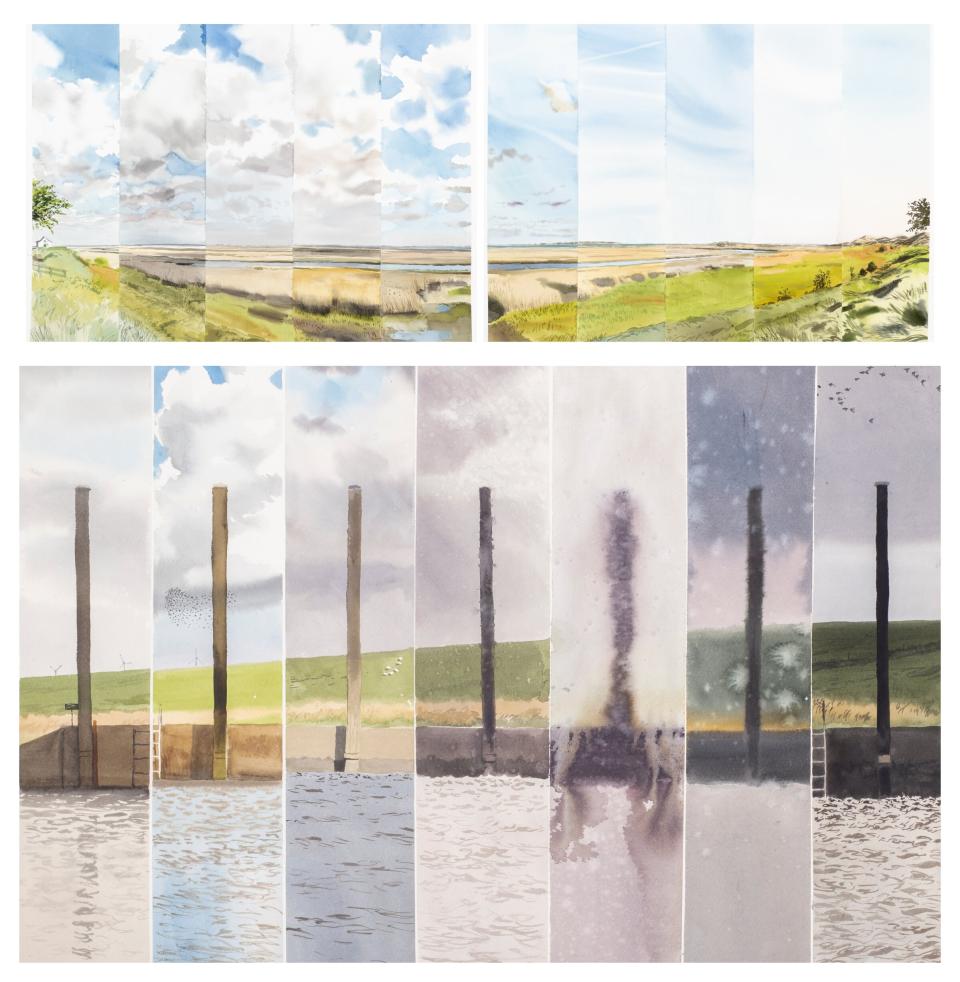
Figure 12: View over Keldsand and meadows near Sønderho through the day and at the Vidå sluice through the day (Højer, Denmark). Watercolors by Ben Woodhams, Haunted by the Last Tide: The SWLA and the Danish Wadden Sea, edited by Marco Brodde, 2023.
Figure 12: View over Keldsand and meadows near Sønderho through the day and at the Vidå sluice through the day (Højer, Denmark). Watercolors by Ben Woodhams, Haunted by the Last Tide: The SWLA and the Danish Wadden Sea, edited by Marco Brodde, 2023.
© 2023 Ben Woodhams. Used by permission.
The copyright holder reserves, or holds for their own use, all the rights provided by copyright law, such as distribution, performance, and creation of derivative works.
Ben Woodham’s watercolors of the Wadden Sea capture the interplay between human-imposed order and the landscape’s fluid rhythms. By painting each strip at different moments of the day, he creates a fragmented but interconnected record of time—each segment distinct, yet inseparable from the whole. The Wadden Sea, with its shifting sands and ever-moving tides, is an ideal subject for this exploration of structure and impermanence. Like human-built dykes that attempt to stabilize the boundary between controlled land and untamed sea, his paintings expose our desire for control—while ultimately affirming the necessity of adapting to change.
For the Baka People, adapting to change has entailed profound loss of seasonal awareness. Assok is a Baka village straddling either side of the N9, a recently paved road south of the Dja Reserve that heads towards the border with the Republic of the Congo. Amidst the roar of logging trucks passing at regular intervals, the elders tell us how they ended up here. After leaving the forest, their parents initially settled in Mintom, towards Djoum, before moving to this area where they felt safer. A Bantu couple welcomed them and even helped gain state recognition for the Chief of Assok, who is the only state-recognized third-class chief in the region.
Upon entering the forest, our guide speaks to jéngì, a forest spirit, about entering with strangers. He explains how time and space are structured differently in the forest. Spatially, wetlands are scattered throughout the forest, their size fluctuating with the seasons—expanding during the wet season and shrinking in the dry—with increasing variability due to climate change. Wetland spaces serve as important markers of seasonal time. In the dry season, they provide shelter for pythons (mboma), vipers (mékè), and tortoises (kùndà), though these animals are increasingly rare near settlements because of overhunting. At different times of year, sangiers, gazelles, and other small mammals can also be found here—though again, in diminishing numbers. Among the wetland vegetation, clusters of the medicinal malatassé plant stand out as another temporal indicator: Its broad leaves close tightly in the evening and gradually open and widen as the day progresses.
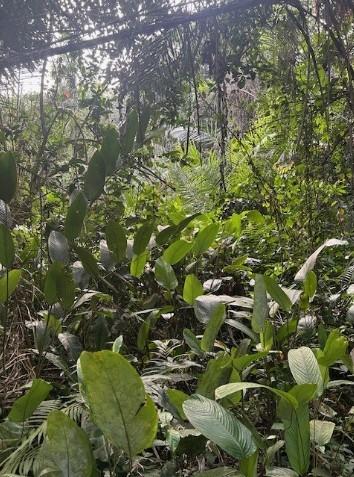
Figure 14: Malatassé plant (Marantaceae) in Assok. Photograph by Blake Ewing, January 2025.
Figure 14: Malatassé plant (Marantaceae) in Assok. Photograph by Blake Ewing, January 2025.
© 2025 Blake Ewing. Used by permission.
The copyright holder reserves, or holds for their own use, all the rights provided by copyright law, such as distribution, performance, and creation of derivative works.
Compared to the roadside, the dry wetland is calm. Our guides speak to time passing differently here and in the adjacent forest. Here the Baka tell time from bird calls—such as the turacou (kólóká) or partridge (kpúngūlù)—and even the daily rhythms of bee activity: Màkèló is the sound of bees waking up between 5 a.m. and 6 a.m.; màndò the sound of bees moving between flower and their hives during the day; mògòmbé specifies buzzing of bees between 3 p.m. and 5 p.m.; and mòjɛ̀mbɔ̀ is the buzzing of bees in the early evening between 5 p.m. and 6 p.m. But on the noisy roadside these time indictors are silent.
In all three sites, situated knowledge is increasingly challenged by external pressures that seek to impose rigid structures on inherently dynamic environments. In the Wadden Sea, time unfolds in multiple registers, where immediate concerns like climate change and erosion coexist with historical legacies of land reclamation and diking. The Halligen islands of the Wadden Sea, unprotected by dykes, embody an existence of continual adaptation to flooding. The inhabitants of the Halligen have long built elevated homes—Warften in German—to accommodate the encroaching sea.
Morecambe Bay’s shifting sandbanks and tidal channels defy static readings, with dangers like quicksand and fast-moving tides being both real and constructed through language, contrasting with the lived knowledge of those who adapt to its changing rhythms. This dynamic environment fosters a dual experience: slow immersion in vast open spaces, paired with the urgency of shifting tides. Artist Debbie Yare, talking to us about her artistic practice, underscores the importance of walking “with” the Bay, recognizing its changing nature and the attentiveness needed to navigate its rhythms. In all three sites, it is clear that temporal structures represent a negotiation between local knowledge and contexts which are constantly in flux.
Keywords: seasons, cycles, rhythms
Link words: history, future, impermanence, rhythms, adaptation, seasons, ruptures


